
Rev. Jonathan Boucher FRSE, FSA (12 March 1738 – 27 April 1804) was an English clergyman, teacher, preacher and philologist.

Rev. Jonathan Boucher FRSE, FSA (12 March 1738 – 27 April 1804) was an English clergyman, teacher, preacher and philologist.
Jonathan Boucher was born in Blencogo, near Wigton, Cumberland, and educated at the Wigton Grammar School. [1] After training in Workington, Jonathan became a teacher, at St. Bees School and in 1759 went to Virginia, where he became a private tutor in the families of Virginia planters. Invited to become vicar of a nearby Anglican church, but lacking any religious qualifications, he briefly returned to England, to be ordained by the bishop of London in March 1762. He also carried a cane around the colony.[ citation needed ]
He landed in America again on 12 July, was associated with the Anglican Church, and remained until 1775 as rector of various Virginia and Maryland parishes, including St. Mary's, Caroline County, Virginia, Hanover, King George County, Virginia, and St Anne's in Annapolis, Maryland [1] and in 1771, St. Barnabas Church, Upper Marlboro, Maryland. [2]
He also kept a school, and among his charges, from 1768, was John Parke Custis, the stepson of George Washington with whom he began a close friendship. Earlier, on Whitsun Monday, 1766, he baptised 350 Black adults at his Caroline County parish, and preached to about 3,000 for about an hour. [3]
He was widely known as an eloquent preacher, and his scholarly attainments won for him the friendship and esteem of some of the ablest scholars in the colonies. [2] [1] He was also an ardent Tory, believing firmly that protest against Government wrongs should be carried out within the law– but definitely not an uncritical supporter of British policy; for example, he considered the 1765 Stamp Act to be "oppressive, impolitic and illegal", and the Royal proclamation against the Westward Expansion of the thirteen colonies "unjust and impolitic". [4] During his residence in Maryland he vigorously opposed the vestry act, by which the powers and emoluments of the Maryland pastors were greatly diminished. When the struggle between the colonies and the mother country began, although he felt much sympathy for the former, his opposition to any form of illegal obstruction to the Stamp Act and other measures, and his denunciation of a resort to force, created a breach between him and his parish, and for months, he preached with a pair of loaded pistols beside him. [2] In a fiery farewell sermon at St. Barnabas in 1775, to a hostile crowd of 200 men, he preached after the opening of hostilities he stated: [1]
I will continue to pray for the King; and all who are in authority under him ... As long as I live ... will I ... proclaim: God save the King [bold added] [2] [5]
At the conclusion and with pistol in hand, he seized the leader of the crowd, Osborn Sprigg of Northampton, Maryland, and together they walked to Boucher's horse. Both men were allowed to leave without harm. [2]
With George Washington forced to make a hard choice between protecting his argumentative friend and showing loyalty to the colonists' cause, in the autumn of 1775 Boucher returned to England with his wife, Eleanor Addison of Oxon Hill, Maryland, where his loyalism was rewarded by a government pension. [5]
In 1784 he became vicar of Epsom in Surrey, where he continued until his death on 27 April 1804, becoming known as one of the most eloquent preachers of his day. [1]
In 1804, shortly before his death, he was elected a Fellow of the Royal Society of Edinburgh but his link to Edinburgh is unclear. [6]
Boucher was an accomplished writer and scholar, contributed largely to William Hutchinson's History of the County of Cumberland (2 vols., 1794 seq.), and published A View of the Causes and Consequences of the American Revolution (1797), dedicated to General George Washington, and consisting of thirteen discourses delivered in America between 1763 and 1775; Peter Laslett called Boucher "the arch-conservative of the American Revolution" and the work "pure Filmerism, the ablest exposition of the 'patriarchal system' that had ever been made." [7] His philological studies, to which the last fourteen years of his life were devoted, resulted in the compilation of A Glossary of Provincial and Archaic Words, intended as a supplement to Samuel Johnson's Dictionary, but never published except in part, which finally in 1831 passed into the hands of the English compilers of Webster's Dictionary, by whom it was used. [1] His "Reminiscences of an American Loyalist" were also belatedly published, first in serial form in "Notes and Queries" in the 1870s.
He married three times, first in America in 1772 to Eleanor Addison, of which little is known, other than that his wife did not appear to return to Britain with him; they had a daughter named Eleanor Boucher. His second marriage occurred in England in 1787 to Mary Elizabeth Foreman, who died the following year. His last marriage in 1789 was to Elizabeth James (née Hodgson), a widow to Dr. John James. James and Boucher had seven children together, including Barton Boucher. [6]
His son, Barton Boucher (1794–1864), rector of Fonthill Bishop, Wiltshire in 1856, was well known as the author of religious tracts, hymns and novels, [1] while his daughter Eleanor married Edward Hawke Locker, Civil Commissioner of the Greenwich Hospital. [8] [9]

Richard Henry Lee was an American statesman and Founding Father from Virginia, best known for the June 1776 Lee Resolution, the motion in the Second Continental Congress calling for the colonies' independence from Great Britain leading to the United States Declaration of Independence, which he signed. Lee also served a one-year term as the president of the Continental Congress, proposed and was a signatory to the Continental Association, signed the Articles of Confederation, and was a United States Senator from Virginia from 1789 to 1792, serving part of that time as the second president pro tempore of the upper house.

Jonathan Trumbull Sr. was an American politician and statesman who served as Governor of Connecticut during the American Revolution. Trumbull and Nicholas Cooke of Rhode Island were the only men to serve as governor of both a British colony and an American state, and he was the only governor to take up the Patriot cause at the start of the Revolutionary War. Trumbull College at Yale University, the town of Trumbull, Connecticut, Trumbull County, Ohio, and Jonathan the Husky are all named for him.
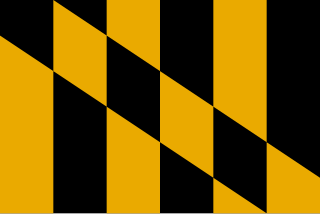
The Province of Maryland was an English and later British colony in North America from 1634 until 1776, when the province was one of the Thirteen Colonies that joined in supporting the American Revolution against Great Britain. In 1781, Maryland was the 13th signatory to the Articles of Confederation. The province's first settlement and capital was in St. Mary's City, located at the southern end of St. Mary's County, a peninsula in the Chesapeake Bay bordered by four tidal rivers.

Richard Bland, sometimes referred to as Richard Bland II or Richard Bland of Jordan's Point, was an American Founding Father, planter, lawyer and politician from Virginia. A cousin and early mentor of Thomas Jefferson, Bland served 34 years in the Virginia General Assembly, and with John Robinson and this man's cousin Peyton Randolph as one of the most influential and productive burgesses during the last quarter century of the colonial period.
Thomas Sim Lee was an American planter, patriot and politician who served as Maryland Governor for five one-year terms, as well as in the Congress of the Confederation (1783–84), Maryland Ratification Convention of 1788 and House of Delegates in 1787. He also held local offices and owned many town lots in Georgetown (which became part of the new federal city, Washington, District of Columbia, and spent his final decades operating "Needwood" plantation in Frederick County, Maryland. In addition to working closely with many of the Founding fathers, he played an important part in the birth of his state and the nation.
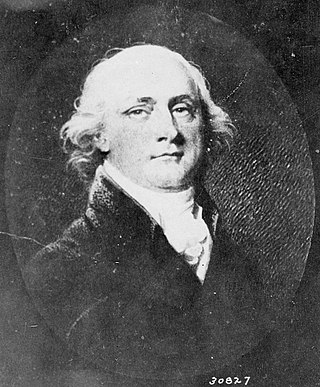
John Francis Mercer was a Founding Father of the United States, politician, lawyer, planter, and slave owner from Virginia and Maryland. An officer during the Revolutionary War, Mercer initially served in the Virginia House of Delegates and then the Maryland State Assembly. As a member of the assembly, he was appointed a delegate from Maryland to the Philadelphia Convention of 1787, where he was a framer of the U.S. Constitution though he left the convention before signing. Mercer was later elected to the U.S. House of Representatives from two different districts in Maryland. In 1801—1803, he served as Maryland's 10th governor.
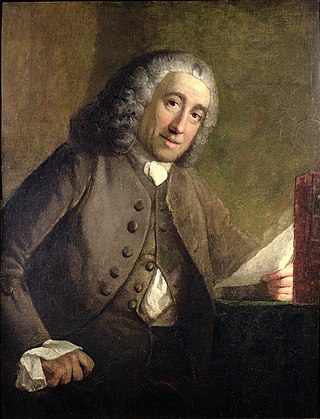
Francis Fauquier was a British colonial administrator who served as the lieutenant governor of Virginia from 1758 to 1768. Born in England to a Huguenot family, he emigrated to the British colony of Virginia to take up of the office of lieutenant governor. A teacher and close friend of Thomas Jefferson, Fauquier frequently hosted lavish parties for the American gentry as governor.

Margaret Brent, was an English immigrant to the Colony of Maryland, settled in its new capitol, St. Mary's City, Maryland. She was the first woman in the English North American colonies to appear before a court of the common law. She was a significant founding settler in the early histories of the colonies of Maryland and Virginia. Leonard Calvert, Governor of the Maryland Colony, appointed her as the executrix of his estate in 1647, at a time of political turmoil and risk to the future of the settlement. She helped ensure soldiers were paid and given food to keep their loyalty to the colony, thereby very likely having saved the colony from violent mutiny, although her actions were taken negatively by the absentee colonial proprietor in England, Cecil Calvert, the second Lord Baltimore, and so ultimately she paid a great price for her efforts and was forced to leave the colony.

John Parke Custis was an American planter and politician. Custis was a son of Martha Washington and Daniel Parke Custis as well as a stepson of George Washington.

Andrew White, SJ was an English Jesuit Catholic missionary who was involved in the founding of the Maryland colony. A chronicler of Colonial Maryland, his writings remain a primary source on the land, the Native Americans and the Jesuit mission in North America.

Thomas John Claggett was the first bishop of the newly formed American Episcopal Church to be consecrated on American soil and the first bishop of the recently established (1780) Diocese of Maryland.

St. Barnabas Church, also known as St. Barnabas' Episcopal Church, Leeland, was built in Leeland, Maryland, and was established in 1704 as the parish church of Queen Anne Parish which had been established that same year. Because of its location in one of the richest tobacco-producing regions in Colonial Maryland, the small church has been a cultural hub for southern Maryland from early colonial times, through the American Revolution, Civil War, and Reconstruction. The church holds some highly significant art and was the scene of a fiery anti-revolutionary showdown that was close to erupting in violence.
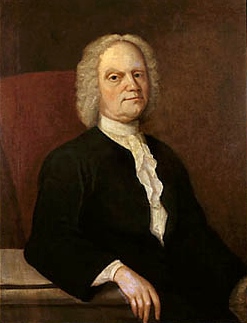
Gustavus Hesselius was a Swedish-born American painter. He was European trained and became a leading artist in the mid-Atlantic colonies during the first half of the eighteenth century. He was among the earliest portrait painters and organ builders in the United States. He was named to the Prince George's County Hall of Fame by the Prince George's County Historical Society.
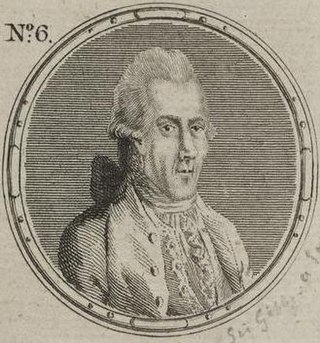
Sir Gilbert Elliot, 3rd Baronet, was born at Minto, Roxburghshire, and was a Scottish statesman, philosopher and poet.
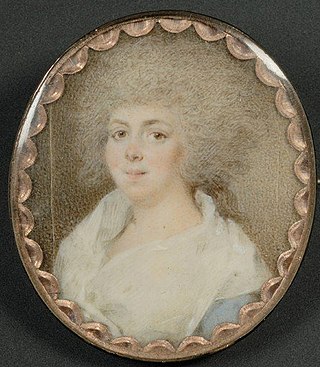
Eleanor Calvert Custis Stuart, born Eleanor Calvert, was a prominent member of the wealthy Calvert family of Maryland. She was the wife of John Parke Custis who was the son of Daniel Parke Custis and Martha Dandridge Custis. She and John had seven children. She was widowed when John Parke Custis died of disease at the end of the American Revolution at Yorktown where he served with his stepfather, George Washington. Eleanor married Dr. David Stuart, an Alexandria physician and business associate of George Washington on November 20, 1783.
David Stuart was a Virginia physician, politician, and correspondent of George Washington. When Washington became President of the United States, he made Stuart one of three commissioners appointed to design a new United States capital city.

Walter Dulany Addison was an Episcopal clergyman who served as Chaplain of the United States Senate (1810–1811).
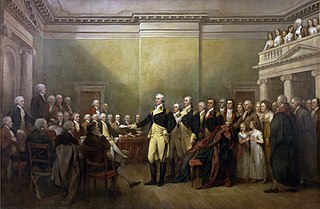
Then Province of Maryland had been a British / English colony since 1632, when Sir George Calvert, first Baron of Baltimore and Lord Baltimore (1579-1632), received a charter and grant from King Charles I of England and first created a haven for English Roman Catholics in the New World, with his son, Cecilius Calvert (1605-1675), the second Lord Baltimore equipping and sending over the first colonists to the Chesapeake Bay region in March 1634. The first signs of rebellion against the mother country occurred in 1765, when the tax collector Zachariah Hood was injured while landing at the second provincial capital of Annapolis docks, arguably the first violent resistance to British taxation in the colonies. After a decade of bitter argument and internal discord, Maryland declared itself a sovereign state in 1776. The province was one of the Thirteen Colonies of British America to declare independence from Great Britain and joined the others in signing a collective Declaration of Independence that summer in the Second Continental Congress in nearby Philadelphia. Samuel Chase, William Paca, Thomas Stone, and Charles Carroll of Carrollton signed on Maryland's behalf.

William Parks was an 18th-century printer and journalist in England and Colonial America. He was the first printer in Maryland authorized as the official printer for the colonial government. He published the first newspaper in the Southern American colonies, the Maryland Gazette. He later became authorized as the official printer for the colonial government of Virginia. Parks was also the publisher and printer of the first official collection of the authentic 1733 set of Virginia's laws, and the first colonial publisher and proprietor of The Virginia Gazette newspaper. During his lifetime Parks established four new newspapers in the colonies. He also worked with Benjamin Franklin on several projects related to printing, most notably, the establishment of a paper mill in Virginia, the first such mill south of Pennsylvania.
st anne's annapolis boucher.